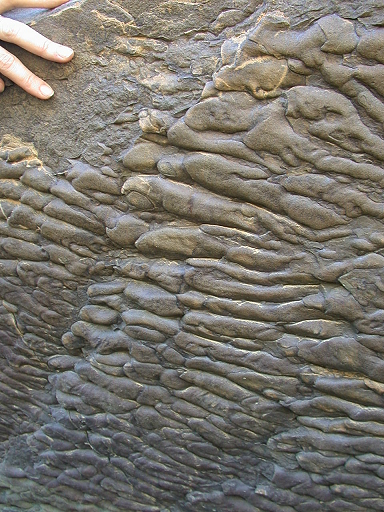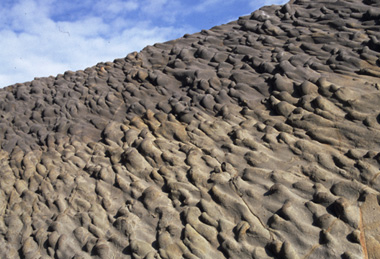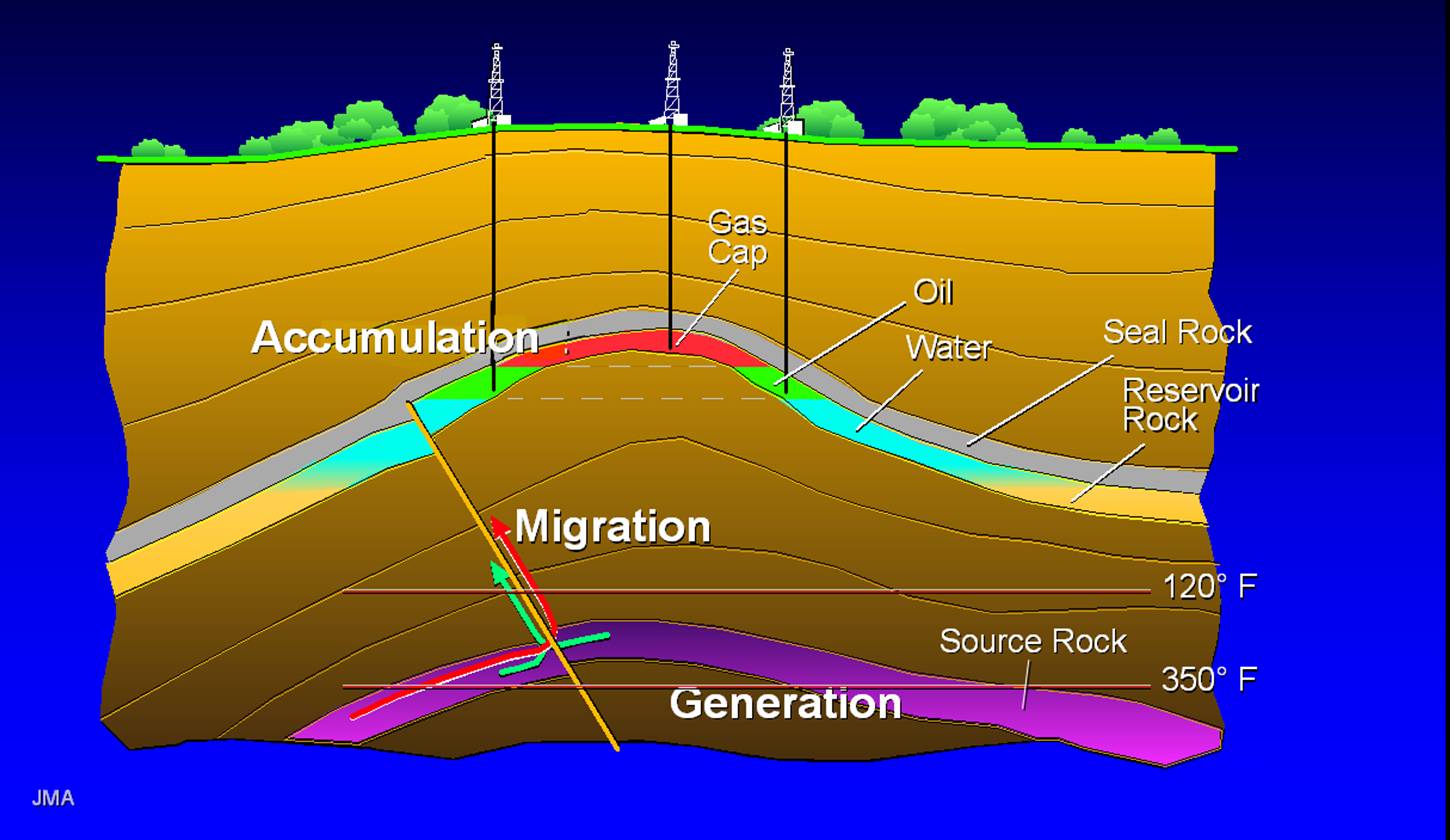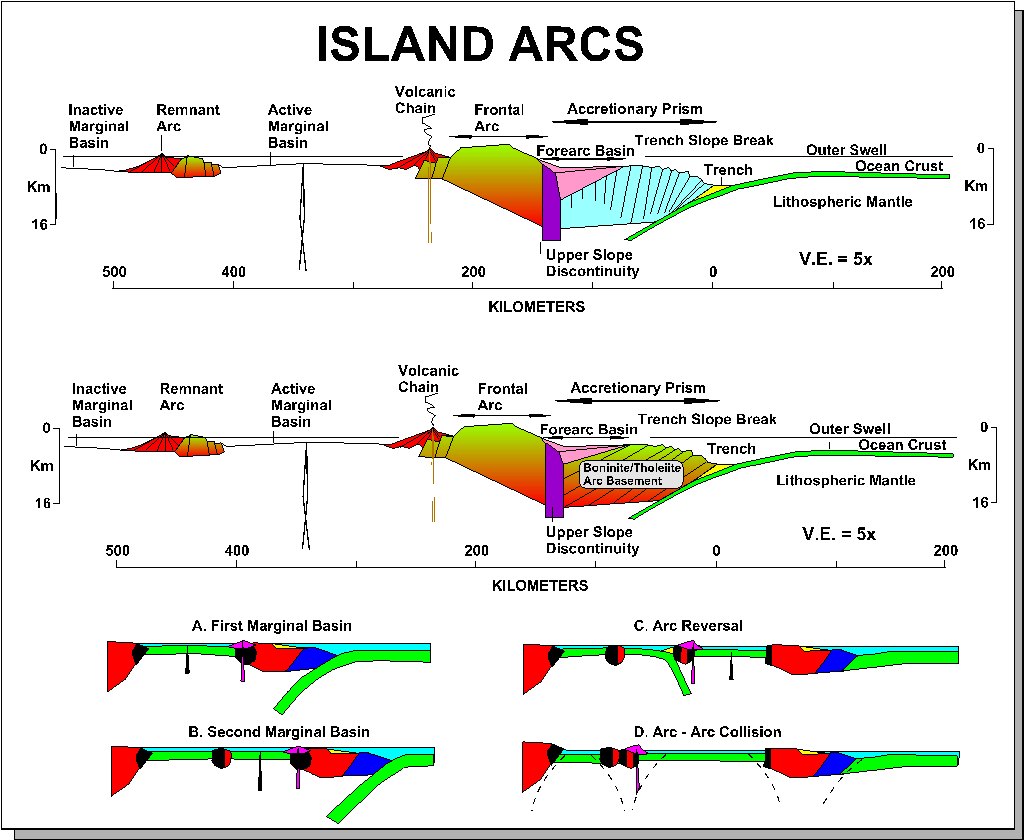Sedimentary Structures
Sediment is a dynamic data structure that is very useful to identify the deposition environment. The structure of the sediment by physical processes before, during and after sedimentation.
The process is caused among others by:
a. Fluid Flow
b. The mass flow
c. Transportation by agents of erosion (wind, snow)
d. The process of biogenic
e. The process of chemical
f. The process of physics
Sedimentary structures reflect environmental conditions during sedimentation and control changes, and since that's sedimentary structures have many uses, among others, namely:
a. Interpretation of the deposition environment (transport mechanism, the direction of flow, depth, wind power & speed relative currents, tectonic sedimentation, and the condition of environment itself.)
b. Determine the top and bottom layers deported.
c. Determine paleogeography and early flows of an area.
Structural Classification of Sediments
1. Structure of erosion: is a structure formed by erosion caused by fluid flow and stream sediments prior to deposition above the plane of the layers. This type of erosion structures such as sole marks (flute casts, groove casts) and channels and scours.
a. Sole Mark: The structure of the sediment found on the top or bottom of a layer (Boggs, 1992)
Positive mold shaped sandstone or more kasaryang rocks rest on a more subtle. Sole marks are usually found in sedimentary rocks that have undergone reversal
Figure 1: Sole marks are experiencing a reversal
Source : http://serc.carleton.edu/NAGTWorkshops/sedimentary/images/sole_marks.html
b. Flute cast: shaped like the sole mark the end like wildfire. Usually found in turbiditic sandstones (Tucker, 1991)
figure2:
flute cast http://www.kueps.kyoto-u.ac.jp/ ~ web-bs/bs/gallery/flute_eg.html
c. groove cast: appears as a bulge rectilinear, rounded up sharply peaked, and lies in the field below the sandstone bedding. Some groove cast in groups and shows a set of protrusions and indentations that can be viewed as order-2 groove cast. Most of the set of order-2 groove cast showed divergent patterns and spread symmetrically on both sides of the main cast groove. The structure is thought to form due to the filling indentations formed in the mud hard by a moving object. The structure of such a structure also called shuffle ("drag mark"; "drag cast") (Kuenen, 1957). Groove casts generally appear in groups. More than one set of grooves cast is usually seen in the same plane, where the second set of cutting the first set with a taper angle cuts. Most of the set groove casts are usually eliminated by a second set of groove cast. In one set of groove cast, there would be little or perhaps no azimuth deviation. Groove cast rarely appear together with flute casts; both structures seem to be exclusive to one another. Individuals groove cast reliefs show only about 1 or 2 mm, very straight, and in most outcrops showed no starting point or end point. Therefore, we rarely find the "tools" are responsible for the formation of a groove cast. Groove cast should be distinguished from the structure of shear (slide mark; slide cast) formed by the movement of a large object or a mass of relatively large-sized objects, such as shale raft (shale raft). Mass tends to rotate shifts in both vertical and lateral direction so that the resultant curved traces and reflects the turn. Groove cast did not show such properties; groove marks are associated with other tools such as prod cast and skip casts. As flute casts, groove casts most commonly found in the field below turbidity bedding. Groove cast may be the type of structure under the bedding areas are most often found in Flysch facies.
The origins of groove cast has been a puzzle for some time. Groove cast is produced by the current structure. Cast groove orientation correlates very well with the current direction as indicated by other structures. In addition, evidence that the groove cast is a proven tool marks from the fact that very rarely found, namely the existence of particles of sand or fragments of the framework of the animals at the downstream end of the groove casts. However, the details of the dynamics of the formation of groove cast is still unclear. Most of the objects are transported by currents moving in a way rolling or bounced, as indicated by various types of collisions trail. Groove cast formation, on the other hand, requires a continuous contact between the "tool" with basic, even require the existence of pressure. In addition, as indicated by the groove ornate, "tool" that does not perform rotational movements. Eddy produces flute, not the groove. Thus, the mechanism of groove formation has not been fully understood. The existence of the sets intersecting groove cast is also a problem in itself. Assumed groove formed by turbid currents that move as a stream of concentrated toward the bottom of the slope. However, if a set of groove recording the movement to the bottom of the slope, then another set that will not record the movement toward the bottom of the slope. Because it is often found, the groove is one indicator of ancient currents that are very useful. However, the groove should be used in conjunction with other structures, groove only provide information about the azimuth, but did not provide information about the direction of flow.
d. Channels and scours: there are almost in all the environments of deposition. Appear as surface erosion at the base layer, and easily recognizable because it cuts the field of bedding. Rock is more rough than the surrounding rock. In a cross-channel structure found confusing possibilities.
2. Structure Deposition : syndepositional sedimentary structures, structures that are often encountered the bedding-lamination, cross maze, ripple waves, graded layer, a layer of massive, dune, antidune, etc.. To be described is the first structure 4.
a. bedding and lamination: by the horizontalitybedsets. Bedsets there are 2 that planar bedsets and composite bedsets.
Figure 3: sedimentary bedding
Sumber : http://ahmadsyarifhidayat.com/wp-content/uploads/2011/07/Picture2-300x195.jpg
b. The cross-bedding: bedding that indicates apparent angle between the layer =- internal boundary layer bedding. If the cross is a layer, called cross-bedding. When laminates, called cross lamination (Lewis and McConchie, 1994). There are two types of cross-bedding, which is planar and trough.
figure 4. Cross-bedding
Sumber: https://blogger.googleusercontent.com/img/b/R29vZ2xl/AVvXsEjsvengHfx2aXX_6cH8gpyn7ZTojLkzj-EwE1BWNVxzfpZepTGz9FCgE9oOqSlVGEFekSLC3INFip1eJuj7RO-lInq_jCSfUE1myC_vht4mNF1S4NDF31eOLtpRvq2YTaIZnAN8IbC1RdRj/s1600/Arahsimpangsiur.png
c. The gradation bedding: bedding that changing grain size gradation. If it is become fine upward, then it is called Normal grading. In contrast, when so-called inverse coarsening upward grading.
Figure 5: grade bedding
sumber: densowestliferz.wordpress.com
d. massive bedding: the bedding that does not indicate the presence of structures in the body is due to the massive bedding .deposition is so fast, debris result of high density sludge, or sediment gravity results
3. Structure of Post-Deposition
This structure is formed after the precipitation occurs, the result of the deformation process before it occurs compacting perfectly. Structures that formed were: slide and slump, convolute bedding, load casts, stylolite, sandstone dikes, dish and pillar and sheet dewatering.
a. Slide and slump : mass movements above the plane skidded along the slopes that cause little deformation on the sediment's body (Tucker, 1991). Folds, faults and brecciation of the overall rise could occur in the slump. Slides will result in synsedimentary folds (Potter and Pettijohn, 1977). Movement slump will result in folds and faults.
figure 6.
sumber : discoveryofatlantis.ipower.com
Folds are irregularly shaped and spread in all directions is called convolute. This structure is located just above the plane bedding (Tucker, 1991). the genesis is uncertain, but may occur due to differences in vertical and lateral flow. crease yield and anticline Syncline, anticline usually used to detect hydrocarbon prospects.
b. Load cast : sole mark structures that occur as a result of loading and the difference between the density contrast. It usually occurs in the sandstone below the mudstone. Sandstone some will infiltrate into the mudstone due to loading.
figure 7.
source: geologyguobloki.blogspot.com
c. Dish and pillar: sedimentary structures are often found together. Dish (bowl) looks like a laminated thin and concave when viewed vertically. Pillar nearly equal to the dish, but this structure vertically cut sandstone layers (Boggs, 1992). Formed by the escape of water from the body of rock due to rapid deposition.
4. Structure of biogenic
Biogenic structures actually enter into the realm of ichnology (Collinson & Thompson, 1982). This structure can show the environment of deposition, sedimentation rates and processes (Compton, 1985)
Animals can leave traces in a way to touch, tread, move across, feeding on surface sediments, member / vent deposition of sediment in search of food, dig a hole to live and creates a shape after getting out of the hole sediments (Compton, 1985).
There are three aspects of the classification of trace fossils (Collinson & Thompson, 1982), namely:
a. Aspects of morphology: identification based on morphological and biological nomenclature according naming (ichnogenus and ichnospecies), reference is the size, way of life and preservation.
b. Aspects of preservation-Sedimentologists: morphological identification, model, positioning, and the preservation process.
c. Aspect-environmental way of life: by the way of life (cubichnia, repichnia, etc.)
Fossils can show the environment of deposition in addition it can be used to determine sedimentation whether or not to proceed. Fossils can also document the behavior of living things that have been extinct and also organisms that have no hard body parts. Moreover, it can indicate a direction of a layer.
5. Interpretation of the Ancient Flow
Sedimentary structures may show indications of an ancient stream, the paleoslope, direction / sediment dispersal patterns, full-circuit with the geometry of rock units and the location of sediment sources. The interpretation may also have economic significance, for example, to determine the spread of placer deposits (Graham, 1988)
Before performing the interpretation of an ancient stream, should be examined first supporting structure and the genesis of such structures. Besides the 3D cross-sectional layer of sediment must be known to be measured plunge, dip, strike, etc..
If the slope is less than 15 degrees and the rocks have not been deformed, it can be measured with a compass. If the slope is more than 15 degrees, may have been exposed to the geological structure, the structure must be identified first. Ancient flows can be determined through dip-strike, dip or plunge anyway.
6. Current Ripple Interpretation
Ripple and dune sand is coarse in appearance undulates-being. Usually generated by wind / water-offs. Ripple is less than 50cm in length and height from 0.5 to 3 cm, while the dune more than that (Collinson and Thompson, 1982)
gambar9.
http://www.brynmawr.edu/geology/314/fieldtrip04/fieldtrip04-Images/23.jpg
Bibliography
http://kepalabatu.finddiscussion.com/t8-belajar-terus
http://www.kueps.kyoto-u.ac.jp/~web-bs/bs/gallery/flute_eg.html
http://serc.carleton.edu/NAGTWorkshops/sedimentary/images/sole_marks.html
http://www.brynmawr.edu/geology/314/fieldtrip04/fieldtrip04-Images/23.jpg
http:// geologyguobloki.blogspot.com
http://discoveryofatlantis.ipower.com
http:// gemland.com
http:// densowestliferz.wordpress.com
Surjono, SS, Winardi, S., Amijaya, D, H, 2010, Analysis of Sedimentologists , Geo Books, London















